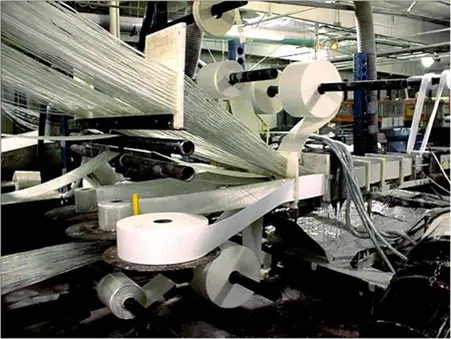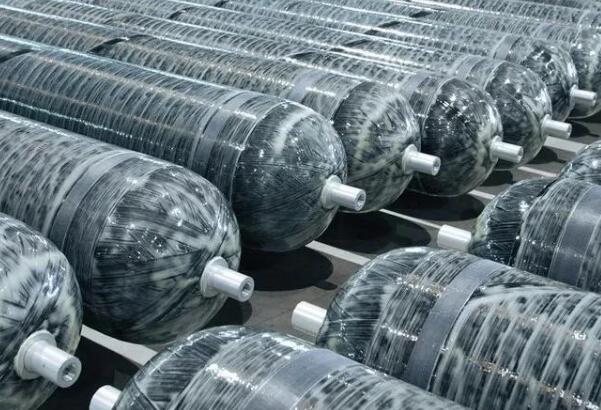1. Overview
Modern clean production requires clean and wear-resistant workshop floors and as low a dust content in indoor air as possible, which is not only a requirement to improve labour conditions, but also a guarantee of product quality. Since 1995, pharmaceutical companies in China have started to implement GMP (Good Manufacturing Process) validation, and all pharmaceutical companies are trying to make the hardware and software level of production meet the old GM norms. The most important indicator of cleanliness in the specification is the anti-abrasiveness of the floor, the better the anti-abrasiveness, the lower the amount of dust precipitation on the floor and the higher the cleanliness level achieved. For high level clean places (100-1000 levels), it is recommended to use materials that do not or weakly precipitate dust; materials that precipitate more dust can be used for low level clean places (100,000 – million levels); and materials that strongly precipitate dust cannot be used for places with clean requirements.
In order to meet the functional requirements of industrial production workshops and modern management, special floor materials are often used for ground decoration. Ground coatings are an important material of choice. Many cleanroom floors abroad also use monolithic polymer surfaces, including coatings and veneer materials.
Floor coatings for industrial production halls, also known as industrial floor coatings, are generally commonly used with epoxy resin coatings and polyurethane sound coatings. Both types of coatings have good resistance to chemicals, abrasion and mechanical impact. However, as the cement floor is a porous material prone to moisture absorption, polyurethane has a poor tolerance to moisture and is prone to interlayer peeling and pinholes if not constructed carefully. The adhesion to the cement base is poorer than that of epoxy resin coatings, so when wear resistance and cleanliness are the main performance requirements, epoxy resin coatings should be used, while when elasticity is the main performance requirement, polyurethane resin coatings should be used.
Epoxy resin wear-resistant clean floor coating for two-component room temperature curing of thick film coatings, usually will be solvent-free epoxy resin coatings called “self-levelling coatings”. It was developed and tested in China in the 1980s and has been widely used in GMP validation floor projects in pharmaceutical factories in China, and has achieved very good results.
Solvent-free epoxy self-levelling wear-resistant clean floor coatings for industrial floors have many advantages. For example:
(1) High bond strength with the grassroots, very low hardening shrinkage, not easy to crack.
(2) Seamless overall, easy to clean, no collection of dust and bacteria.
(3) High solids, once into a thick film; solvent-free, construction toxicity is small, in line with environmental requirements for coatings VDC.
(4) High strength, abrasion resistance, durable, can withstand long periods of crushing by forklifts, carts and other tools.
(5) Resistant to permeation, good resistance to chemicals and good tolerance to oils.
(6) Excellent workability and levelling, with good decorative properties.
(7) Room temperature curing film formation, easy to repair and maintain.
(8) Smooth and flat surface, rich in color, can beautify the working environment.
(9) The ground is non-toxic, meets the requirements of hygiene, and has a certain degree of flame retardancy.
(10) For ground with conductive requirements, it can be made into conductive epoxy ground coating.
2. Composition of epoxy resin wear-resistant floor coatings
The most commonly used film-forming material in clean wear-resistant floor coatings is the synthetic resin type material represented by epoxy resin. The coating is generally divided into solvent-free, solvent-based and water-soluble types. Solvent-based systems generally have solvent volatilization, low viscosity, low solids content, thin film formation, floating and food and other defects during construction. Solvent-free systems can be adjusted to nearly 100% solids without inactive solvents and are thicker than Benard cell and floating. Water-soluble clean and wear-resistant floor coatings have good adhesion to wet substrates. This section focuses on solvent-free systems for wear-resistant floor coatings.
(1) Film-forming substances
According to the requirements of clean wear-resistant floor coatings, the film-forming substance should have the following properties: room temperature curing, high adhesion, strong mechanical properties, strong chemical resistance and good electrical properties. Film-forming substances for epoxy resin wear-resistant floor coatings are generally bisphenol A epoxy resins, the properties of which are described in the previous sections. As a base material for ground coatings, it is required to have excellent adhesion to concrete and other substrates, low volume shrinkage when cured, excellent chemical resistance, tough and wear resistant coating film, and a certain “tolerance” to wet surfaces. Bisphenol A epoxy resins can be divided into group epoxy resins and liquid epoxy resins according to their relative molecular quality. The solid epoxy resin with high relative molecular quality contains more hydroxyl groups, which can catalyse the curing reaction between epoxy group and amine, and the drying speed is faster, but the solid content is low, the coating film is thin, the miscibility with curing agent is poor, the paint is highly cooked, and the leveling is poor. Although the low viscosity epoxy resin lacks hydroxyl group, the curing speed is slower, but it can be made into high solid content thick film coating, and the miscibility with curing agent is good, and the leveling of the coating is good during construction, and the curing speed can be improved by adding grouping accelerator. Therefore, it is appropriate to use low relative molecular mass epoxy resin, commonly used E44 (6101), E42 (644), E51, imported D.E.R.331 and SHELL828 and other representative resins.
(2) Curing agent
Amine curing agent is the main curing agent for epoxy coatings, such curing agents are mainly fatty amines, fatty amine adducts, alicyclic amines, alicyclic amine adducts, polyamides, polyamide adducts, Manny’s base, etc.
Among the various curing agents, aliphatic amines react quickly with epoxy resins, with high heat release, high crosslinking density of the coating film and good resistance to chemical corrosion. Fatty amine adducts have improved in terms of irritation, whitening and compatibility with epoxy resin, but the cross-linked structure of the final film is similar to that of fatty amine, with high glass transition temperature and brittleness, mainly used for high chemical resistance and solvent resistant coatings.
Many properties of alicyclic amines and their adducts have been improved compared to aliphatic amines and their adducts, such as light colour, good leveling, high gloss, no whitening, no induction period, its glass transition temperature is still high, mainly used as a curing agent for solvent-free epoxy ground coatings.
Polyamide curing agent comprehensive performance is excellent, the long chain hydrocarbon within the molecule has a good internal plasticizing effect, so that the coating film soft, impact resistance, amide bond provides greater adhesion, wettability, peel strength and tolerance of wet surfaces. Chemical house resistance decreases compared to other amine curing agents, but still maintains a high toughness and is widely used as a curing agent for solvent based epoxy floor coatings.
The miscibility of polyamide and epoxy is not good, and there is still the phenomenon of whitening and oiling without maturation before construction. The polyamide adduct is compatible with epoxy resin and has a low free amine content, so it is easier to cure than standard polyamide under bad conditions and get a non-yellowing, non-white frost coating. Therefore, most of the epoxy ground coatings are currently using polyamide adducts as ground coating curing agents.
Manniche base, also known as phenolic amine, is characterized by the presence of phenolic hydroxyl groups in the molecule, which can promote curing and is commonly used in low temperature, humid and underwater curing coatings. Due to the rigidity of the benzene ring in the molecule makes the coating film brittle, so alone as a curing agent for floor coatings is not used, more as an intermediate layer of mastic, mortar curing agent.
(3) Thinners
Diluent is an organic solvent that dissolves resin. The main role is to reduce the viscosity of the resin, but also to facilitate the transfer of heat released during the curing of the resin, which can properly extend the life of the glue. Diluents are divided into two categories: inactive diluents and active diluents.
1) The inactive diluent itself is not involved in the curing reaction, but only for the purpose of physical mixing and viscosity reduction. It is generally added as 5%-15% of the weight of the resin, which will partially escape when the resin is cured, thus increasing the shrinkage of the resin, reducing the bonding force, mechanical strength and heat deformation temperature, and even producing pores in serious cases. Special attention should be paid when using solvent-based epoxy ground coatings.
2) Types of active diluents and their use. The active diluent has epoxy group and can participate in the epoxy curing reaction of epoxy resin, so it does not have the disadvantage of escaping.
After curing the resin without much influence, but also often play a toughening role, in the formulation of the amount of toughening agent can be reduced or not. However, when adding active diluent, the amount of hardener should be increased accordingly.
Clean wear-resistant ground coating a construction film thickness up to 0.8-3.0㎜, in order to prevent non-active solvent volatile and produce coating film trap, more than the choice of active thinner, made of no (volatile) solvent-based self-leveling coating. It also meets the requirements of environmentally friendly green paint and further improves the construction conditions.
As the thinner itself is a short-chain molecule, the carbon chain is shorter than the epoxy resin, thus hindering the formation of the chain and affecting the main performance of the film-forming material.
(4) Pigments and fillers
Epoxy resin wear-resistant ground coating is a thick paste type coating, the amount of coloring pigments can be less than ordinary pigments. On the other hand, the epoxy ground coating table drying time is long, the use of organic pigments easy to produce floating color, flowering and other problems. Most of the organic pigments are inorganic pigments, such as diamond white powder, chrome oxide green and iron oxide pigments.
The filler can be barite powder, calcium carbonate, natural mineral powder, mica powder and quartz powder. As it is a thick film coating, in order to reduce the shrinkage stress of the coating film and avoid cracking due to excessive volume shrinkage during the curing process, some coarse fillers (also known as coarse and fine aggregates) must still be used.
The filler’s size, oil absorption and addition amount have a decisive role in the final performance of the ground coating, mainly for the purpose of achieving low shrinkage, low teachability, high addition amount, high abrasion resistance and good storage. At present, the better solvent-free epoxy self-levelling coatings on the market mostly use natural (wear-resistant) ore powder as the main filler, which has its unique features compared with the commonly used calcium carbonate filler.
1) Influence of filler addition on paint ripeness. Whether it is constructability or from the performance of the film-forming material, the degree of teaching of the ground coating is crucial. On the one hand, we hope that the solid content of the coating is as high as possible, which can reduce the cost and achieve the purpose of a thick film; on the other hand, we do not want the viscosity to be too high, the high viscosity is not conducive to construction, affecting the leveling and defoaming of the film-forming material. Through the experiments found: wear-resistant mineral powder added to the amount of paint drum degree influence change less. This is due to the relatively low oil absorption of natural mineral powder compared to calcium carbonate. In the same oil absorption of the paint (light) calcium carbonate added no more than 30%, while the natural mineral powder added up to 50% or more.
2) The effect of filler addition on the shrinkage rate of the coating film line. For epoxy wear-resistant ground coating, its biggest advantage lies in the construction of a large area, the overall seamless, which has high requirements for the coating film linear shrinkage rate.
(3) The influence of filler on the abrasion of the coating film. According to GB/T1768-89 experimental tests, (CS17, 500*2g, 1000R.)
Natural (wear-resistant) mineral powder filler is superior to general calcium carbonate filler in many aspects, making the epoxy self-leveling wear-resistant ground coating construction process significantly improved, with the following advantages:
①The amount of filler added is greatly increased, while not significantly increasing the coating maturity, ensuring the leveling of the coating during construction.
②The unique fibrous geometry of the powder added can significantly reduce the linear shrinkage of the coating film and improve the wear resistance.
③The filler is compatible with resin and other materials and does not affect the chemical resistance of the coating film or other comprehensive properties.
(5) Auxiliaries
Epoxy clean wear-resistant ground coating on the leveling requirements of the coating film is extremely high, especially in the case of thicker film, both to make the coating film in the active period of full leveling, but also require the rapid discharge of the bubbles in the wet film and the surface does not leave defects, therefore, leveling, defoaming and other additives selection and dosage is an extremely critical factor. On the one hand, the increase in the amount of such additives will reduce the surface tension of the coating film, which is conducive to the leveling and defoaming of the coating film, on the other hand, too many of these additives will be added to the introduction of insoluble substances, the resin, thinner and filler ask the bonding of adverse effects.
The various pigments and fillers in the paint are subject to dispersion and grinding, and in order to ensure fineness and improve dispersion efficiency, dispersion additives are added. All additives are added to improve the constructability and performance of the coating film.
The following additives should be considered for epoxy resin wear-resistant ground coatings:
1) dispersant ground coating in the amount, filler content is high, the teaching degree is relatively high, the usual method of dispersion, dispersion efficiency is low, and easy to produce floating colour, flowering phenomenon, must join the wetting dispersant to improve. Polyhydroxy acid ester dispersant has ideal wetting, teaching, dispersion, anti-floating colour, anti-flowering effect, but also can improve the film gloss, promote leveling, prevent the paint precipitation and other effects, the amount of paint for 0.5%-1.5%.
2) leveling agent due to epoxy resin wear-resistant ground coating solvent content less, solvent-free epoxy resin wear-resistant ground coating does not contain volatile solvents, the coating of the high degree of teaching, surface tension, construction of the substrate after wetting poor, poor leveling, coating film easy to appear orange peel, brush marks, ripples, shrinkage and needles and other surface state defects. Therefore, leveling agents must be added to reduce the surface tension of the coating, to extend the flow time and improve the leveling performance. It is advisable to use acrylic copolymers, such as BYK-VP-354 from BYK.
Its surface tension is low and its compatibility with epoxy resin is limited. It can migrate to the surface of the coating film within a short period of time and form a single molecular layer to homogenize the surface tension and reduce the various surface defects of the coating film caused by the surface tension gradient.
3) Defoamer epoxy resin wear-resistant ground coating contains a variety of substances with surface activity, easy foaming. There are many pores in the cement mortar substrate, and the air in the pores will be replaced by the coating to stay in the coating film. During construction, mechanical stirring and scraping will cause a large amount of air to fall into the coating film, while the viscosity of the coating itself is large and the air bubbles are stable in the coating film and not easily discharged. These factors make it necessary to add defoamer in the coating to accelerate the discharge of gas and reduce defects such as needle and fish eye. Non-silicone defoamer can be used, such as BYK’s BYK055/057. its surface tension is low, good diffusion permeability, the formation of surface tension differences in the bubble wall and lead to surface flow, so that the bubble wall thinning and rupture. This type of defoamer and acrylic levelling agent used in conjunction, there is a good synergy, get excellent defoaming and levelling effect, and not easy to appear shrinkage and other side effects.
More YQXPOLYMER Epoxy Resins information, please contact us via email: sales@yqxpolymer.com, or voice to us at: +86-28-8411-1861.
Some pictures and texts are reproduced from the Internet, and the copyright belongs to the original author. If there is any infringement, please contact us to delete.




